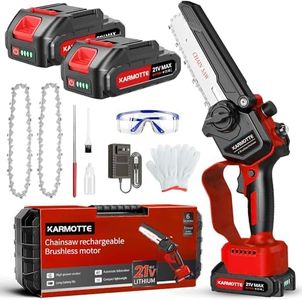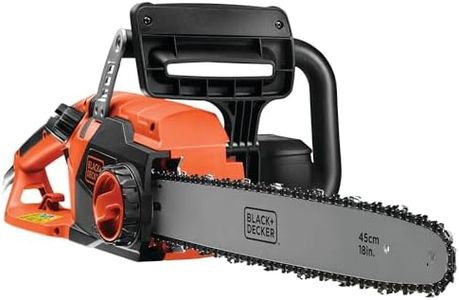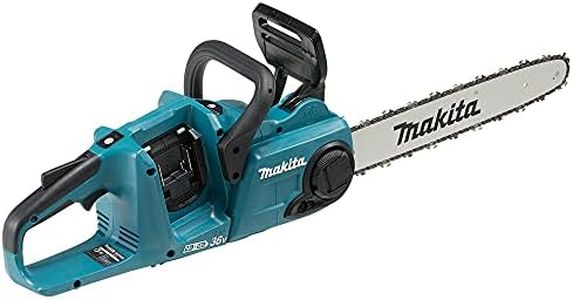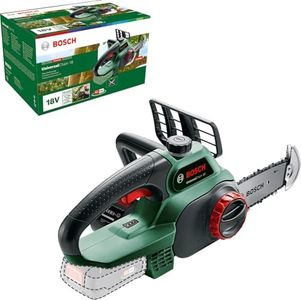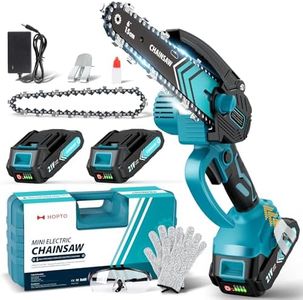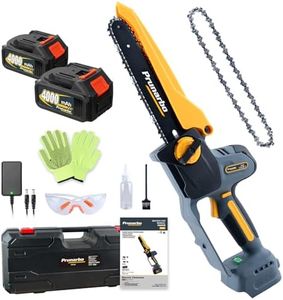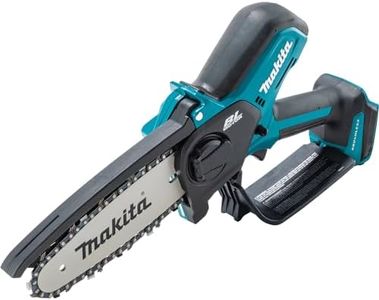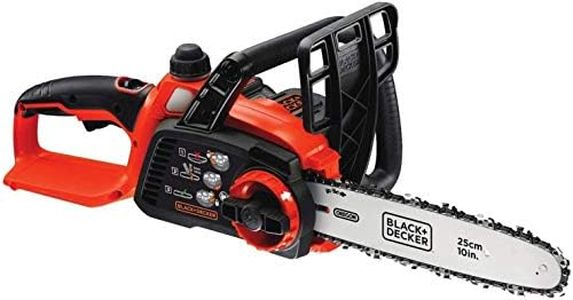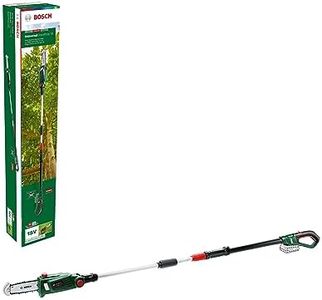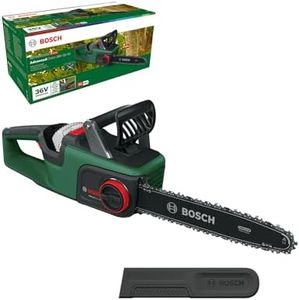We Use CookiesWe use cookies to enhance the security, performance,
functionality and for analytical and promotional activities. By continuing to browse this site you
are agreeing to our privacy policy
10 Best Electric Chainsaw
From leading brands and best sellers available on the web.Buying Guide for the Best Electric Chainsaw
When choosing an electric chainsaw, it's important to understand your specific needs and what kinds of tasks you'll be tackling—whether that's trimming branches in your backyard or occasionally cutting up small logs. Electric chainsaws are great for home users thanks to their low noise, easy start, and minimal maintenance. To make the best choice, you'll want to look at a few key factors that affect how effective and safe the chainsaw will be for your jobs.Motor PowerMotor power in electric chainsaws is usually measured in amps (for corded) or volts (for battery models), and it shows how much force the saw can deliver. A higher value typically means a more powerful saw, capable of handling bigger and tougher branches or logs. Basic pruning or light yard work can be handled by lower power (8-10 amps or around 18 volts), while medium and heavy-duty cutting would benefit from higher ratings (12 amps or above for corded, 36 volts or above for cordless). If you only do small tasks around the garden, you don't need the heaviest motor, but if you anticipate tougher wood or larger diameter material, opt for a more powerful option.
Bar LengthThe bar length is the long, flat metal part that the chain runs around—which generally ranges from 10 to 18 inches in electric models. It determines the size of wood you can cut in a single pass. Shorter bars (10–12 inches) are easier to control and safer for small jobs like pruning or cutting thinner branches. Medium bars (14–16 inches) are more versatile and good for yard cleanup and cutting small trees. The longest bars (16–18 inches) allow bigger cuts but can be heavier and require more caution. Consider the diameter of most things you’ll be cutting—choose a bar a bit longer than the biggest branches or logs you expect to saw.
Power Source (Corded vs. Cordless)Electric chainsaws are either corded (plug-in) or cordless (battery-operated). Corded saws provide constant power but tie you to an electrical outlet, making them best for work close to home or where you have long extension cords. Cordless saws give you total mobility and are great for larger yards or places without easy access to electricity, but run time is limited by battery life. Think about where you'll usually be working—if you need portability, cordless is best; if you're always near a power source and want steady performance, corded is a solid choice.
WeightThe weight of a chainsaw affects how long you can comfortably use it and how easy it is to manage, especially in awkward positions or overhead. Lighter saws (under 8 pounds) are easier to maneuver and less tiring for jobs like trimming or pruning. Medium-weight models (8–12 pounds) balance power and control for most tasks. Heavier units (over 12 pounds) might offer more capability but can be hard to handle, especially for beginners or longer periods of use. If you plan long work sessions or have less upper body strength, aim for a lighter model.
Chain Tensioning SystemThis refers to how you adjust the tightness of the chain on the bar. Traditional models require tools to do this, while some modern saws offer tool-free tensioning knobs. Tool-free systems are user-friendly and let you quickly make adjustments during a job, which is helpful for beginners or anyone who wants less hassle. If you like fuss-free maintenance or expect to adjust tension often, look for tool-free designs. If precise adjustment is more important, or you don’t mind using a wrench, traditional systems are fine too.
Safety FeaturesSafety features include things like chain brakes, hand guards, and low kickback chains. These are designed to protect you if the chainsaw jerks or the chain breaks. A chain brake stops the chain immediately in case of a kickback, and hand guards help protect your hands from debris. Low kickback chains are safer for users who aren’t experienced with chainsaws. Always prioritize safety—choose a saw with good built-in features, especially if chainsaws are new to you or you'll be working in dense brush or tight spaces.
